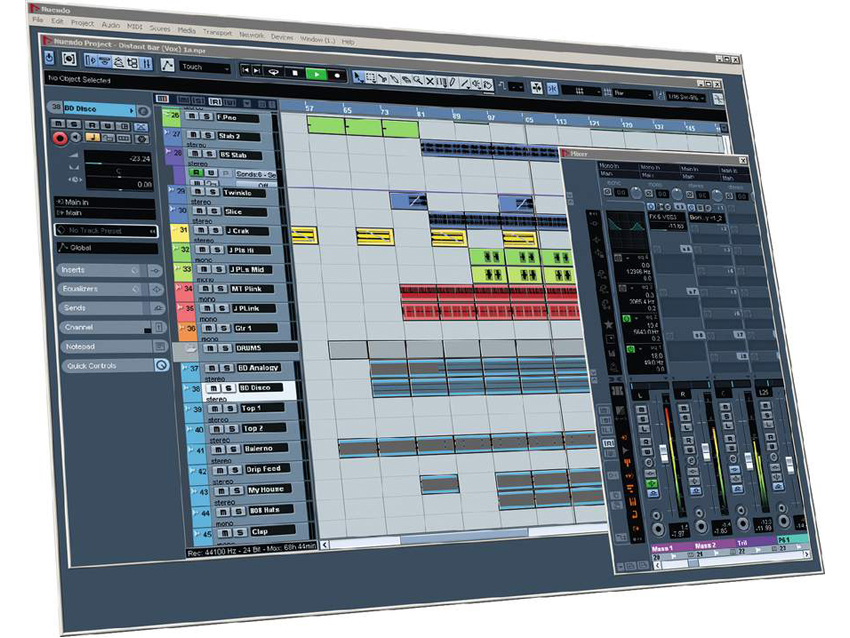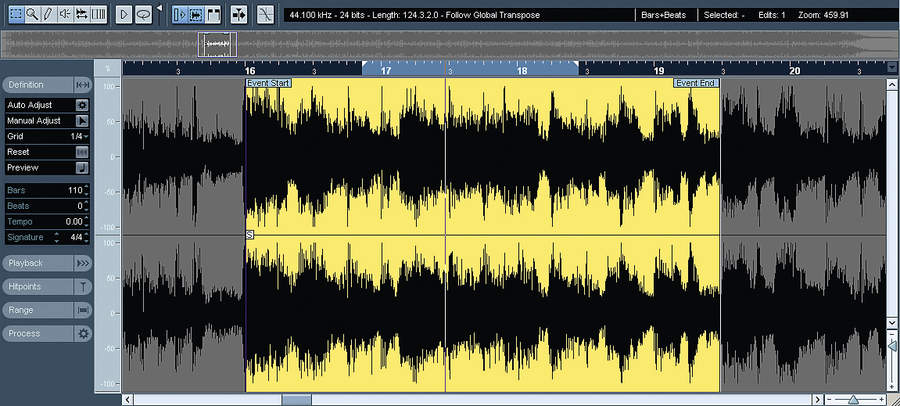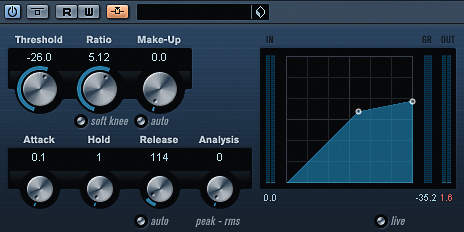MusicRadar Verdict
Nuendo is now a fully-functional, flexible audio and post-production system, and a genuine alternative to Pro Tools HD.
Pros
- +
Sidechain routing. Automation options. Drag-and-drop FX.
Cons
- -
You have to pay extra for the Nuendo Expansion Kit. MediaBay needs third-party support. Expensive.
MusicRadar's got your back



Since its introduction in 2001, Nuendo has often been dismissed as just a more expensive version of Cubase, and there´s been confusion over what sets the applications apart. Steinberg is making things clear with Nuendo 4, though: unlike Cubase, it´s designed primarily for post-production and live recording work.
The first thing you'll notice in comparison to Nuendo 3 are the redesigned Project and Mixer windows. There are no radical changes, but N4 is definitely darker than its forebears, and arguably more 'professional' looking.
Underlying Nuendo 4 is the VST3 audio architecture, which facilitates dynamic input and output assignment (enabling plug-ins to process 5.1 and other bus configurations easily), bus deactivation for unused instrument outputs, new routing possibilities (including sidechaining) and performance improvements (including zero plug-in load during silence).
To make use of this, Nuendo 4 comes with 38 new plug-ins (bringing the total to 60). These cover countless bases and represent a significant improvement on those in Nuendo 3, both in terms of audio quality and functionality.
All insert plug-ins can now also be re-ordered, copied or moved between channels in the Mixer windows using drag-and-drop. But the highlight of the new plug-in functionality is the ability to use proper inter-channel sidechaining - as you might do in an analogue mixing environment - rather than the dodgy workarounds that have been the talk of Cubase and Nuendo forums for years. Thank you Steinberg!
With all this comes a much more flexible routing system that enables Track, Group and FX routing in any order and to any location - even back to an input. There's a feedback loop detection system to prevent unwanted configurations.
MediaBay
The MediaBay database environment made its debut in Cubase 4. It's a media file management system that's designed to incorporate audio, MIDI, track and project data into one accessible entity. There are facilities for tagging files with useful descriptive information and auditioning loops and sounds.
When MediaBay made its debut, criticisms of it centred on performance issues (which seem to have been improved with more focused scanning of existing files) and the fact that the only correctly tagged files are those that come with the software (tagging will always be a tiresome task). MediaBay could be a great time-saving tool in a busy broadcast or post-pro environment, but it remains to seen whether it´ll be adopted extensively by third-party developers.
To make use of MediaBay, Steinberg have introduced Instrument Tracks, which combine MIDI tracks and VST Instruments into one convenient unit (albeit without multiple outputs). There are also Track Presets, which are essentially snapshots of Audio, MIDI or Instrument channel strips (including EQ and Inserts). Recalling specific Insert settings for particular performers or settings is now straightforward.
Automation and more
One area of particular concern to high-end users is the flexibility of a recording/production environment's automation system. While the underlying system of writing and recording automation events to tracks remains unchanged in Nuendo 4, it's been dramatically enhanced with the new Automation panel, and offers far more detailed control over how it's written, overwritten, read and updated.
Different automation modes can now be selected for each channel and read/ write events ignored depending on type. Add to this the new Fill, Trim and Punch options - plus a great Preview mode that's enhanced by the intriguingly named Touch Collect Assistant - and you have a truly up-to-date implementation.
Audio pitchshifting and timestretching have been greatly enhanced with the addition of MPEX 3, the latest version of the algorithm developed by Prosoniq (makers of Time Factory). These audio manipulation enhancements extend to Audio Warp and some great track transpose features.
As well as being able to transpose tracks from the Info Line, it's now possible to set a Root Key for a project and get musically useful transpositions of imported events or existing audio and MIDI material. Parts can be excluded (drum tracks for example), kept within an octave range or locked.
On the editing front, there's now a much-improved Sample editor, which emulates the main Project window with its Inspector-style function tabs. It incorporates a much clearer workflow with regard to editing, hit-points, slices, 'warping' and tempo matching, even if much of the functionality was already in place.
This streamlined approach to workflow extends to the Quick Controls section in the Inspector, which offers speedy access to any parameter associated with the track, including those for FX and VSTi plug-ins.
Wish list
Steinberg has obviously had its ear to the post-production grapevine, as there are 20 new tool modifiers and editing commands for trimming, moving and selecting events quickly. Some of these were only previously possible using Macros or multiple mouse gestures.
The Logical Project editor opens up a whole world of editing and manipulation that was previously restricted to MIDI events. It enables the creation of presets that can be assigned to individual keys, and the reappearance of some 'classic' functions from the days of Cubase VST 5.0, such as 'deleting only muted events'.
There are numerous other tweaks and improvements including an enhanced channel strip, better waveform editing resolution, Apple remote support, MP3 surround encoding, live triggering of sections in the Arranger track (formerly the Play Order Track) and more.
Cubase comparison
Despite all these additional features it's worth noting that there are now some omissions in Nuendo 4 when compared to Cubase 4. These include support for traditional music notation, a drum editor and four virtual instruments.
These features can now be found in the optional Nuendo Expansion Kit. This also enables the importing and exporting of numerous audio formats, has full surround sound support (with down-mixing), video import (with pull-up/pull-down), track sheet printing, tempo and hit-point tools, offline audio batch processing, and extensive synchronisation and external device support.
Even on its own, though, Nuendo 4 is very impressive. In our tests, it was completely stable and utterly reliable on both PC and Mac, and the additional routing options and sidechain support reinforce the feeling that this is an application that has really come of age. Sure, Cubase is a great music production tool, but if you need improved video and surround support - and require maximum system interoperability - then the Nuendo option should definitely be explored.
MusicRadar is the number 1 website for music makers of all kinds, be they guitarists, drummers, keyboard players, djs or producers...
GEAR: We help musicians find the best gear with top-ranking gear round-ups and high- quality, authoritative reviews by a wide team of highly experienced experts.
TIPS: We also provide tuition, from bite-sized tips to advanced work-outs and guidance from recognised musicians and stars.
STARS: We talk to musicians and stars about their creative processes, and the nuts and bolts of their gear and technique. We give fans an insight into the actual craft of music making that no other music website can.
“Sometimes I am two people. Johnny is the nice one. Cash causes all the trouble. They fight”: How Johnny Cash drew on his own experiences to make his greatest songs
“For those on the hunt for a great quality 12-string electro-acoustic that won’t break the bank, it's a no-brainer”: Martin X Series Remastered D-X2E Brazilian 12-String review
“I have that on more records than anything else”: Take a peek inside Vaughn Oliver’s studio










